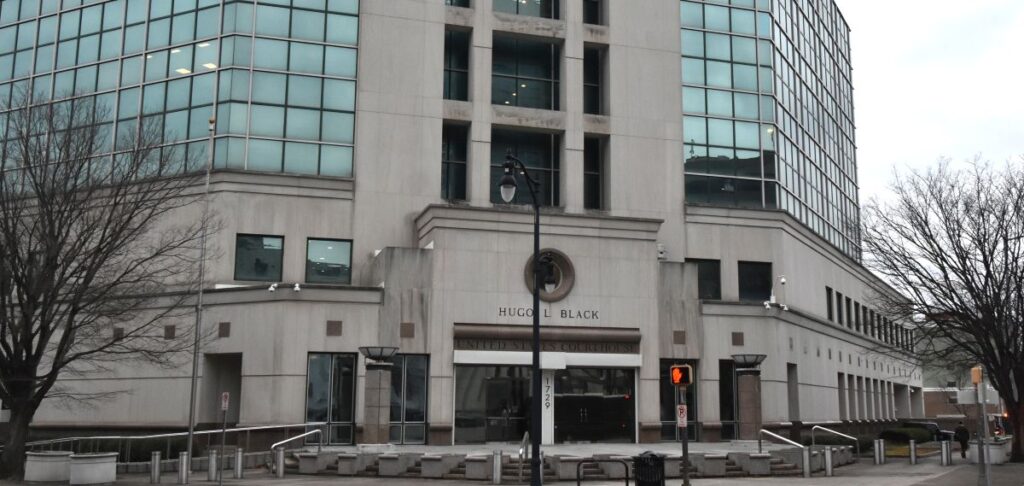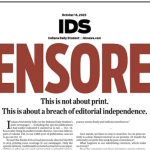Government
Jefferson County Appeals Court Order in Redistricting Case, Seeks Delay in Enforcing It

Donate today to help Birmingham stay informed.
Jefferson County fired the latest salvo in the legal battle over its commission district lines on Thursday, appealing a judge’s ruling earlier in the week that threw out the district map the county approved in 2021.
U.S. District Judge Madeline Haikala ruled that county officials had failed to show during a trial that race was not the major factor when the County Commission drafted new district lines in 2021.
Her ruling opened the door to the possibility that the commission could flip from majority Republican to majority Democratic if the map were changed to draw three majority Black districts and two majority white districts, rather than the other way around.
She gave the county 30 days to file a report outlining its efforts toward drafting a new district map.
Saying that was not enough time, the commission also Thursday requested a stay of execution on the ruling while it appeals the case to the 11th Circuit Court of Appeals.
Cara McClure, the primary plaintiff in the case, responded with “You’re joking?” when told of the county’s action.
After releasing a deep sigh, McClure said the action is “just so unfortunate.
“It’s very unfortunate,” she said. “But just like with anything else, the work continues. We’re going to continue to fight for voters of Jefferson County.”
McClure’s mood was a 180-degree shift from the past 48 hours, when she was celebrating Haikala’s decision.
“I’m so full,” she said after being up most of Tuesday night reading the 139-page ruling. “This is impactful. This is really a blueprint in building Black political power, like the organizing around it, the centering of the folks on the ground. Our power was truly on the line here after decades of discrimination against Black voters in Jefferson County. This is historic.”
The Jefferson County Commission on Thursday reconvened its meeting of Sept. 11 to address one matter — a “pen and ink” change to the escrow attorney in its Affordable Housing Subrecipient Agreement from Fox Rothschild to Balch and Bingham. After passing that change, commissioners went into a half-hour executive session to “discuss a matter of pending litigation.”
Hours later, the notice of appeal and the motion to stay pending appeal were filed in U.S. District Court in Birmingham.
In the county’s filing, it requested that the court rule on the motion to stay “as soon as possible, and at the latest, by Wednesday, September 24, 2025. Should (the district court) deny the stay motion, that timing is necessary to afford (the) defendant time to seek a stay pending appeal from the Eleventh Circuit before the court’s 30-day deadline to file a joint report on the development of a remedial redistricting plan.”
County Attorney Theo Lawson said in his filing that when the court issues an injunction close to the time of an election, a stay is needed to avoid harm to candidates, officials and voters preparing for an election. Such a stay would maintain the status quo until a final decision is made on the appeal.
The next County Commission election is in 2026, with party primaries scheduled for March.
Lawson argued in his filing that the Eleventh Circuit is likely to find that the plaintiffs did not carry their “especially stringent” burden to prove racial gerrymandering. He added that the plaintiffs failed to “untangle race from other permissible considerations,” including preserving the core of existing districts.
The county attorney argued that past noncompliance with federal election laws is not evidence of present-day racial gerrymandering.
“Unlike preclearance submissions from other jurisdictions, the county’s submissions never announced any racial target or a goal of moving voters based on their race,” he wrote.
Even assuming race somehow predominated in past plans, the filing read, the Eleventh Circuit, like the Supreme Court, has “rejected the argument that ‘a racist past is evidence of current intent.’”
“What matters,” Lawson wrote, “is whether the 2021 changes to districts can be explained only by race. Past (section 5) compliance does not reveal a present-day intent to discriminate.”
The county attorney also cited statements made by commissioners, saying that those statements are not direct evidence of intentional discrimination.
“During the 2021 redistricting process, there was only one express reference to the racial demographics (and politics) of only one district,” Lawson wrote, “and (came) only after the whole commission voted to adopt the Enacted Plan.
“That,” Lawson wrote, “is too thin a reed to rest a finding of racial gerrymandering.”
The county attorney offered that Commissioner Sheila Tyson mentioned both racial demographics and politics of three distinct areas. At no time, he wrote, did she say those areas were added to her District 2 “because of race.”
“Moreover,” he wrote, “the idea that these statements revealed an intent to pack Black individuals in District 2 is contrary to undisputed evidence that … Tyson’s District 2 ‘declined’ in Black population.
“Tyson’s comments should be read as an after-the-vote defense of her district in the face of Commissioner (Lashunda) Scales’ public criticisms about the Republican ‘politics’ of areas added to District 2, not evidence of predominant racial purpose during redistricting by the entire commission.”
Lawson wrote that the plaintiffs’ versions of districts relied too heavily on race and not enough on other considerations required by the courts. He also contended “irreparable harm” would come to the commission and the public from substituting the current plan with a race-based one.
“That is offensive and demeaning, both for the commission but especially for the voters who will be reassigned on the basis of race,” he wrote. “Equity favors maintaining the existing districts pending an appeal of the novel theory advanced by the plaintiffs.”


